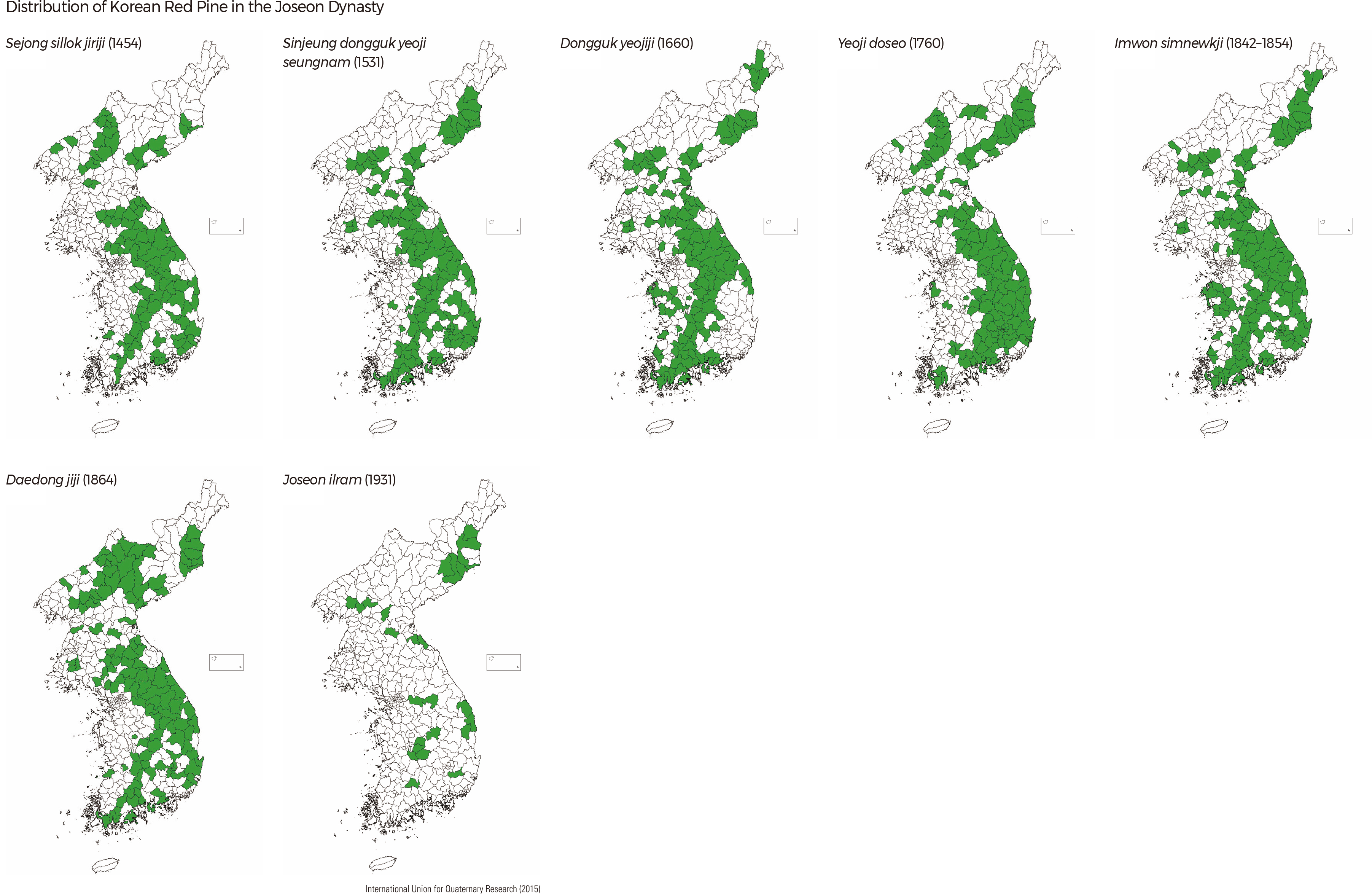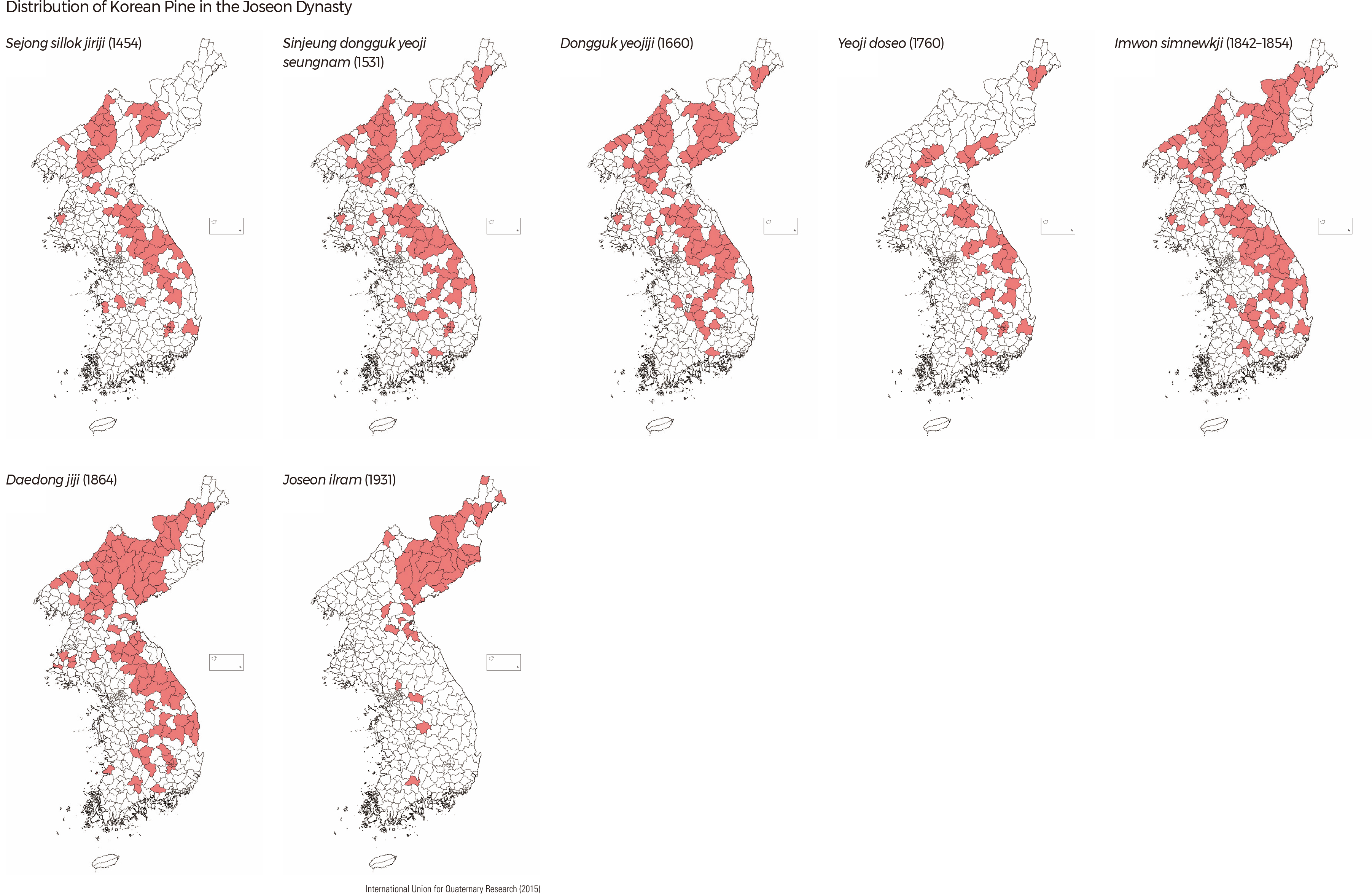English II 2020
Spatial and temporal changes in species for the vegetation history during historical times can be reconstructed using descriptions of local products and tributes from ancient documents of Korea.
Korean Red Pine (Pinus densiflora) is mainly distributed in the eastern regions like Gyeongsang-do and Gangwon-do. This could be explained by a distinct topographic condition of Korea due to the north-south running Taebaeksanmaek (Taebaek Mountain Range), conditions with rocky land and high altitude, relatively moderate temperatures, and low humidity, and by the natural environment and artificial conditions. A mild climate also explains the abundance of Korean Red Pine in Jeollanam-do, Jeollabuk-do, Chungcheongnam-do, and Chungcheongbuk-do.
The historical literature indicates temporal distribution areas of the Korean Red Pine (Pinus densiflora) as follows: 107 sites in the year 1454, 133 in 1531, 139 in 1660, 148 in 1760, 162 in 1842–1845, 125 in 1864, and 27 in 1931. Korean Red Pine was widely distributed throughout the nation from 1531 to 1864. The species was observed in 841 counties from 1454 to 1931. The species was observed in 107 counties in 1454, which increased to 162 counties from 1842 to 1845. The area of Korean Red Pine forests sharply decreased around 1931 due to excess forest use and forest lumbering under Japanese occupation. The extensive afforestation policies that started in the 1970s have led to the artificial planting of Korean Red Pine.
Past distributions of Korean Pine (Pinus koraiensis) were reconstructed based upon descriptions in historical records of local products and by-products. The extensive distribution of Korean Pine during the 19th century and from 1530 to 1660 in high montane areas of eastern and northern Korea may indicate a relatively cooler climate. Counties with Korean Pine were few in 1454, 1760, and 1931, which may imply a milder climate at those times.
Korean Pine (Pinus koraiensis) was frequently present in northern, central, and eastern regions of Pyeongannam-do and Pyeonganbuk-do (84 counties), and Hamgyeongnam-do and Hamgyeongbuk-do (69 counties) of North Korea, and Gangwon-do (94 counties), Gyeongsangnam-do and Gyeongsangbuk-do (83 counties), and Chungcheongnam-do and Chungcheongbuk-do (46 counties) of South Korea. On the other hand, the species is rare in the lowlands and is mostly distributed in the western portion of the Korean Peninsula where the climate is relatively mild and wet, such as Jeollanam-do and Jeollabuk-do (18 counties) and Gyeonggi-do (13 counties) of South Korea, and Hwanghaenam-do and Hwanghaebukdo (23 counties) of North Korea.
|

